Sheffield's Local Plan: What it means for you
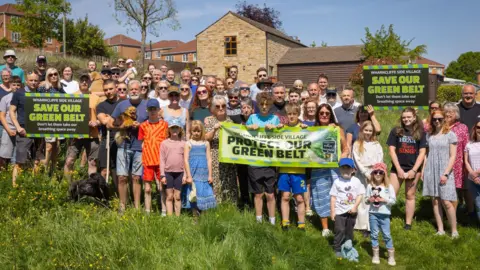 David Thornton
David ThorntonCampaigners gathered outside Sheffield Town Hall earlier this month to protest against plans to build on 14 green belt sites in the city.
Inside the Town Hall, councillors were voting to give the go-ahead to the proposals, which are a part of what is known as the Local Plan - a blueprint for the development of the city in the next decade and beyond.
Since details of the Local Plan first emerged, thousands of residents across Sheffield have joined together to campaign against it.
But why has the Local Plan become such a contentious and controversial issue - and what will it actually mean for communities in the city?
What is a Local Plan?
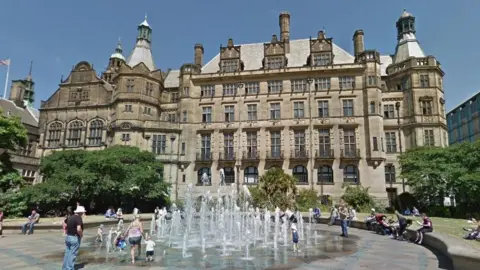 Google
GoogleThe Local Plan examines how a town or city will develop over the next 15 years. In it, a council designates land to be used for housing, industry or green space.
Currently, Sheffield does not have a Local Plan. The last one was in 2009, based on documents produced in 1998, and the new plan has been repeatedly postponed for many years.
On 14 May, councillors voted for the first stage of a new Local Plan which, in total, could see nearly 40,000 new homes constructed in Sheffield by 2039.
No single party is in overall control of the authority, so Labour, the Liberal Democrats and the Green Party all worked together to choose the sites.
Councillor Douglas Johnson, chairman of the housing committee, said: "Sheffield's current Local Plan is extremely out of date and this leaves lots of loopholes open for developers to exploit.
"Without a new one, ultimately the government could step in and set its own plan, which would be much worse for the city."
Why is Sheffield's Local Plan so controversial?
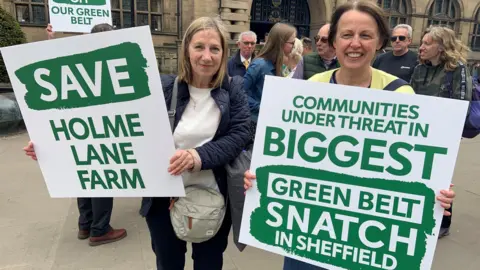
As total of 3,539 new houses, as well as schools, cemeteries and industrial units, have now been approved by councillors for 14 green belt sites.
Campaigners have said they are worried not just about the loss of green space, but the new infrastructure needed for hundreds of homes and schools.
Deborah Nutbrown, a campaigner from Chapeltown, said there had been very little information.
"It's extremely frustrating. It feels as if it's totally been forced upon us," she said.
Sheffield City Council has said it had exhausted all its brownfield sites, but even after building on the 14 proposed sites, 96% of the green belt would remain untouched and protected.
Several of the earmarked sites are in areas which are key election battlegrounds, such as Woodhouse, where the Lib Dems won by just 10 votes in a recent by-election, while in West Ecclesfield the Lib Dems won by only 78 votes in 2024.
What's happening in my neighbourhood?
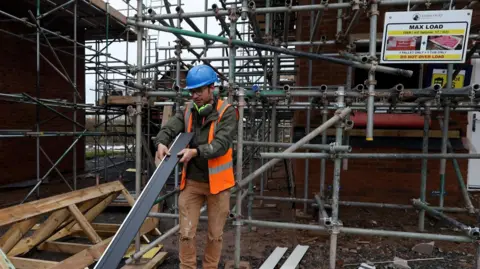 REUTERS/Temilade Adelaja
REUTERS/Temilade AdelajaThe majority of the sites which have been given the go-ahead are in the S35 and S13 postcodes, which has angered some residents who have said the developments should be more spread out across the city.
Residents in Handsworth have collected a 3,700-signature petition, and protest groups have also been formed in Wharncliffe Side, Ecclesfield and Chapeltown.
More than 1,730 homes are planned in Handsworth, and Sheffield South East Labour MP Clive Betts has written to the Planning Inspectorate asking for a fairer distribution.
Betts said: "Handsworth currently faces over 40% of the new allocation of housing on green belt. I am not convinced these proposals are fair."
Sheffield City Council has said it would look at whether other areas of the city could be brought forward so there was a fairer distribution of houses.
Why does Sheffield need so many houses?
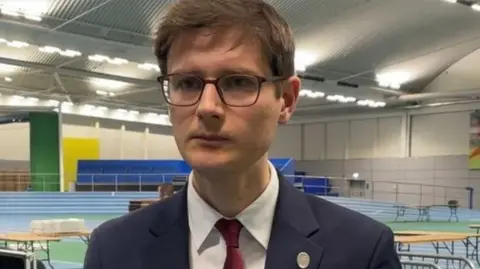
The government has said it wanted to see 1.5 million new homes built across the country by 2029 in a bid to solve the housing crisis and boost economic growth.
In total, Sheffield is expected to see the construction of 38,000 new homes and 655 acres (265 hectares) of employment land, with Sheffield City Council saying tens of thousands of new jobs would be created up to 2039.
Council leader Tom Hunt said: "Sheffield has not been building enough homes for a long time, and to tackle the housing crisis you need a plan.
"We don't want to build tiny box homes that are no good for families - and the golden rule is sites must have affordable homes."
How can I have my say?
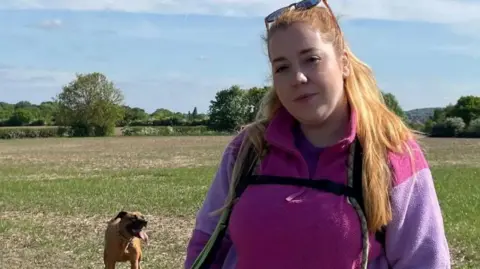
A public consultation has been launched by Sheffield City Council and will run until the middle of July.
The responses will be reviewed by government inspectors.
There will then be a series of public hearings in the autumn.
Inspectors will then publish a preliminary report with further public consultation early in 2026.
Inspectors are expected to issue a final report and the council will decide whether to adopt the Local Plan in July 2026.
Each individual development would then need to go through the normal planning process.
Listen to highlights from South Yorkshire on BBC Sounds, catch up with the latest episode of Look North
